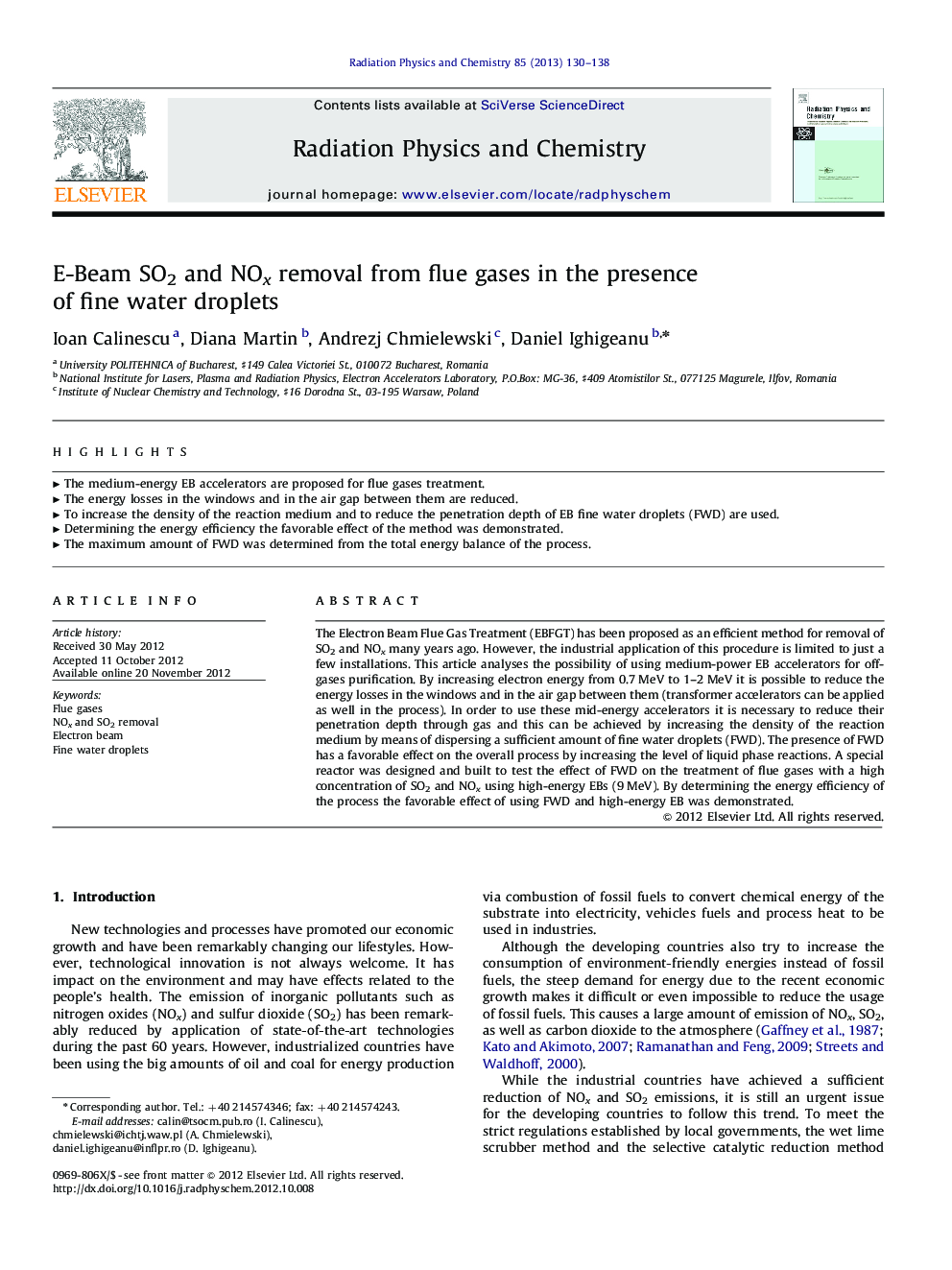| Article ID | Journal | Published Year | Pages | File Type |
|---|---|---|---|---|
| 1886254 | Radiation Physics and Chemistry | 2013 | 9 Pages |
The Electron Beam Flue Gas Treatment (EBFGT) has been proposed as an efficient method for removal of SO2 and NOx many years ago. However, the industrial application of this procedure is limited to just a few installations. This article analyses the possibility of using medium-power EB accelerators for off-gases purification. By increasing electron energy from 0.7 MeV to 1–2 MeV it is possible to reduce the energy losses in the windows and in the air gap between them (transformer accelerators can be applied as well in the process). In order to use these mid-energy accelerators it is necessary to reduce their penetration depth through gas and this can be achieved by increasing the density of the reaction medium by means of dispersing a sufficient amount of fine water droplets (FWD). The presence of FWD has a favorable effect on the overall process by increasing the level of liquid phase reactions. A special reactor was designed and built to test the effect of FWD on the treatment of flue gases with a high concentration of SO2 and NOx using high-energy EBs (9 MeV). By determining the energy efficiency of the process the favorable effect of using FWD and high-energy EB was demonstrated.
► The medium-energy EB accelerators are proposed for flue gases treatment. ► The energy losses in the windows and in the air gap between them are reduced. ► To increase the density of the reaction medium and to reduce the penetration depth of EB fine water droplets (FWD) are used. ► Determining the energy efficiency the favorable effect of the method was demonstrated. ► The maximum amount of FWD was determined from the total energy balance of the process.
